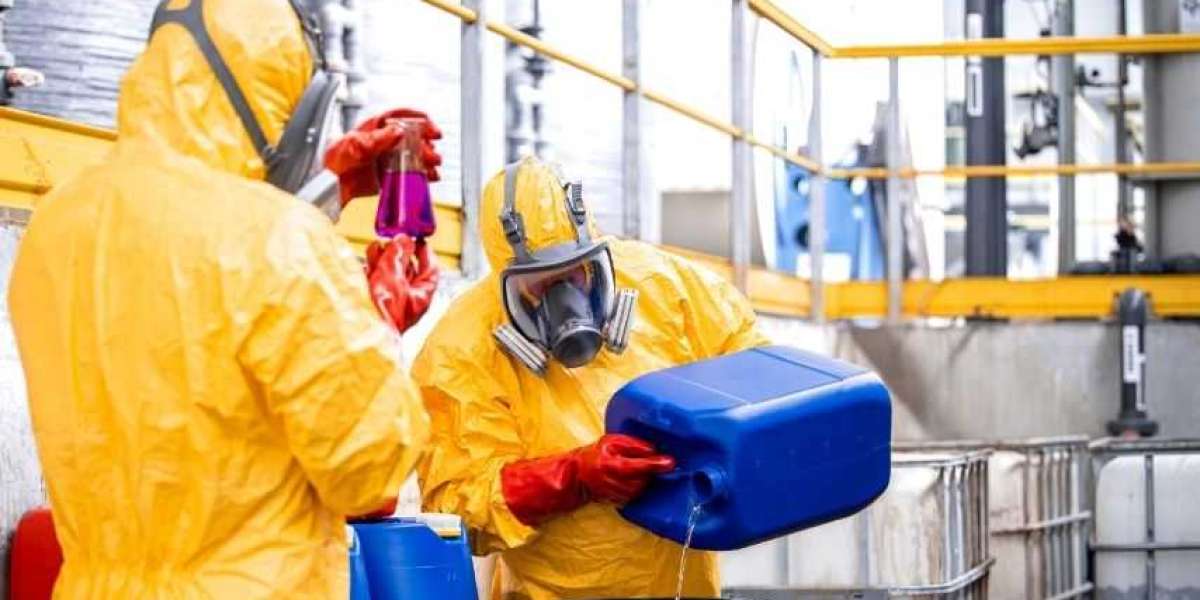HAZOP (Hazard and Operability Study) has become a cornerstone of safety management in Malaysia's chemical manufacturing sector. But how exactly does this systematic methodology enhance operational safety and risk management?
The chemical manufacturing industry in Malaysia faces unique challenges when it comes to maintaining safety standards and preventing operational hazards. HAZOP methodology offers a structured approach to identify potential risks and implement effective control measures.
Whether you're a safety professional, plant manager, or industry stakeholder, understanding HAZOP's role in enhancing chemical manufacturing safety is crucial for maintaining operational excellence and regulatory compliance.
Understanding HAZOP Methodology in Chemical Manufacturing
The HAZOP (Hazard and Operability) study is a systematic and structured approach widely used in the chemical industry to identify potential hazards and operational problems. This comprehensive methodology helps organizations anticipate and prevent accidents, ensuring safer operations in chemical manufacturing facilities.
Core Components of HAZOP Analysis
A HAZOP study in chemical manufacturing revolves around examining process parameters and their deviations systematically. The analysis begins with breaking down the manufacturing process into smaller, manageable nodes or sections.
The operability study focuses on key process parameters like:
- Flow
- Temperature
- Pressure
- Level
- Composition
For each parameter, the team applies guidewords such as:
- More/Less
- High/Low
- No/None
- Reverse
- Other Than
These guidewords help identify potential deviations that could lead to hazardous situations in the chemical manufacturing process. The team then evaluates:
- Possible causes of deviations
- Consequences of these deviations
- Existing safeguards
- Recommended actions for risk mitigation
The systematic nature of HAZOP ensures that no potential hazards are overlooked during the analysis. This thorough examination is particularly crucial in the chemical industry, where small deviations can lead to significant safety incidents.
The methodology requires input from a multidisciplinary team, including:
- Process engineers
- Safety specialists
- Operations personnel
- Maintenance staff
- Quality control experts
This diverse team composition ensures comprehensive coverage of all aspects of the manufacturing process, leading to more effective hazard identification and risk management.
Key Elements of HAZOP Implementation in Malaysian Chemical Sector
The implementation of HAZOP in Malaysia's chemical manufacturing sector requires careful attention to specific elements that ensure its effectiveness as a systematic risk assessment methodology. This structured approach helps organizations maintain robust process safety management while identifying and mitigating potential operational hazards.
Team Formation and Roles
A successful HAZOP study begins with assembling a qualified, multidisciplinary team. In Malaysian chemical facilities, this typically includes process engineers, operations personnel, safety specialists, and maintenance experts. The team leader, often a certified HAZOP facilitator, guides the analysis process while ensuring active participation from all members.
Each team member brings unique insights and expertise to the study. Process engineers provide technical knowledge about system design and parameters, while operators contribute practical experience about day-to-day operations. Safety specialists ensure alignment with regulatory requirements and industry best practices.
Documentation and Reporting Requirements
Proper documentation forms the backbone of effective HAZOP implementation in Malaysia's chemical sector. All findings, recommendations, and action items must be meticulously recorded following standardized formats that comply with local regulations and international standards.
The documentation process includes:
- Detailed process flow diagrams
- Operating procedures and parameters
- Deviation analysis worksheets
- Risk assessment matrices
- Action tracking systems
- Implementation timelines
Reports must clearly communicate identified hazards, their potential consequences, and recommended safeguards. Malaysian chemical manufacturers typically maintain these records for regular review and updates, ensuring continuous improvement in their process safety management systems.
Regular review meetings help track the progress of implemented recommendations and verify their effectiveness. This systematic approach ensures that operational hazards are properly addressed and controlled throughout the facility's lifecycle.
Risk Assessment and Hazard Identification Process
The HAZOP methodology employs a structured approach to identify and evaluate potential hazards in chemical manufacturing processes. This systematic evaluation helps organizations understand and mitigate risks effectively while ensuring operational safety.
Systematic Deviation Analysis
The heart of HAZOP lies in its systematic deviation analysis, where each process parameter is methodically examined for potential variations. This comprehensive approach ensures no potential risk goes unnoticed during the assessment phase.
Process parameters like temperature, pressure, and flow rates are analyzed using guidewords such as 'more,' 'less,' or 'none.' Each deviation is carefully evaluated to determine its impact on process safety and operations.
When an identified hazard is discovered, the team documents its causes, consequences, and existing safeguards. This detailed documentation helps in developing effective control measures and emergency response procedures.
The risk assessment process involves:
- Identifying process nodes and parameters
- Applying guidewords to generate deviations
- Evaluating consequences of each deviation
- Assessing existing safeguards
- Determining additional control measures
Teams must consider both immediate and long-term effects of each potential hazard. This includes examining how deviations might impact:
- Equipment integrity
- Personnel safety
- Environmental consequences
- Production quality
- Operational efficiency
The analysis also incorporates historical incident data and industry best practices to enhance the accuracy of risk predictions. This evidence-based approach strengthens the overall assessment process and improves safety outcomes.
Regulatory Framework and Compliance Standards
In Malaysia's chemical manufacturing sector, adherence to regulatory frameworks and compliance standards is crucial for maintaining operational safety. The government has established comprehensive guidelines that align with both local and international requirements to ensure the highest level of safety in chemical facilities.
Malaysian-Specific Requirements
The Department of Occupational Safety and Health (DOSH) Malaysia enforces strict regulatory compliance measures for chemical manufacturing facilities. These requirements are designed to meet international standards while addressing unique local challenges. Facilities must comply with the Occupational Safety and Health Act 1994 and the Factories and Machinery Act 1967, which form the cornerstone of safety regulations.
Chemical manufacturers must conduct regular safety assessments and maintain detailed documentation of their safety protocols. The facility's safety standards must align with both local regulations and international best practices, ensuring a comprehensive approach to risk management.
Key compliance requirements include:
- Regular safety audits and inspections
- Proper documentation of safety procedures
- Implementation of emergency response plans
- Training programs for personnel
- Maintenance of safety equipment
Malaysian authorities also mandate compliance with international safety standards such as ISO 45001 and other industry-specific certifications. These standards help facilities maintain consistent safety practices while meeting global benchmarks for operational excellence.
DOSH regularly updates its guidelines to reflect evolving industry needs and technological advancements. Chemical manufacturers must stay informed about these changes and adjust their safety protocols accordingly to maintain compliance and ensure workplace safety.
Best Practices for HAZOP Implementation
A successful HAZOP implementation requires a systematic and proactive approach to ensure comprehensive risk assessment and mitigation. The key to achieving optimal results lies in following established best practices that have proven effective across various industrial settings.
Training and Competency Development
Implementing an effective HAZOP study demands a well-trained and competent team. Organizations must prioritize comprehensive training programs that cover both theoretical knowledge and practical applications of HAZOP methodology.
Team members should receive specialized training in:
- Process safety fundamentals
- HAZOP methodology and techniques
- Risk assessment procedures
- Documentation requirements
- Communication protocols
Regular refresher courses help maintain team competency and ensure awareness of the latest industry standards. This ongoing education supports a more thorough and effective analysis during HAZOP sessions.
To enhance the effectiveness of training programs:
- Develop structured learning paths for different team roles
- Include hands-on workshops and practical exercises
- Conduct periodic assessments to evaluate competency levels
- Document training records and certifications
- Incorporate lessons learned from previous HAZOP studies
A comprehensive HAZOP study relies heavily on the expertise of its participants. Therefore, establishing clear competency criteria for team members is crucial. This includes:
- Minimum years of relevant experience
- Technical qualifications
- Understanding of process operations
- Familiarity with safety systems
- Previous HAZOP participation
Organizations should also implement mentoring programs where experienced HAZOP practitioners guide newer team members. This knowledge transfer ensures continuity and maintains high standards in HAZOP implementation.
Regular performance evaluations help identify areas for improvement and additional training needs. This proactive approach to competency development contributes to more robust and reliable HAZOP outcomes.
Integration with Overall Safety Management System
The successful implementation of HAZOP studies requires seamless integration with an organization's existing safety management framework. This integration ensures that identified hazards and recommended control measures become part of the broader risk management strategy, leading to enhanced operational efficiency.
Continuous Monitoring and Review
A robust process safety management system incorporates HAZOP findings into regular monitoring protocols. This integration allows organizations to track the effectiveness of implemented control measures and make necessary adjustments based on real-world performance data.
Regular reviews of HAZOP recommendations help maintain the relevance of safety protocols as operational conditions evolve. These reviews should be conducted at predetermined intervals or when significant changes occur in the process, equipment, or operating procedures.
To ensure effective integration, organizations should:
- Establish clear communication channels between HAZOP teams and safety management personnel
- Develop standardized procedures for implementing and tracking HAZOP recommendations
- Create feedback mechanisms to evaluate the effectiveness of implemented control measures
- Maintain comprehensive documentation of all safety-related changes and their impacts
- Schedule periodic audits to verify compliance with recommended safety protocols
The integration process also involves incorporating HAZOP findings into employee training programs and standard operating procedures. This ensures that all personnel understand and follow the established safety protocols, contributing to overall operational efficiency.
Organizations should also consider implementing digital tools and management systems that can help track and monitor the status of HAZOP recommendations. These systems can provide real-time updates on implementation progress and help identify areas requiring immediate attention.
Conclusion
The implementation of HAZOP methodology in Malaysia's chemical manufacturing sector represents a significant step toward enhanced operational safety and risk management. Through systematic risk assessment, proactive hazard identification, and comprehensive control measures, organizations can create safer working environments while maintaining operational efficiency. By following the guidelines outlined in this guide, chemical manufacturers can establish robust HAZOP processes that align with international standards and local regulatory requirements. Remember that successful HAZOP implementation relies on continuous improvement, regular training sessions, and effective communication among team members from various fields. Take action by reviewing your current safety protocols and considering how HAZOP methodology can strengthen your facility's safety standards. Engage with safety professionals, invest in proper documentation systems, and maintain a collaborative approach to risk management. Your commitment to implementing HAZOP effectively will not only ensure regulatory compliance but also contribute to the overall growth and sustainability of Malaysia's chemical manufacturing sector.







